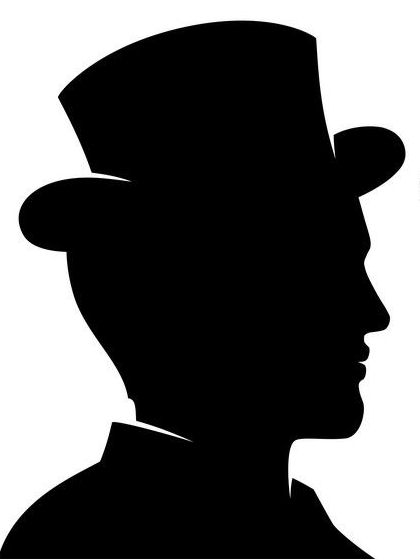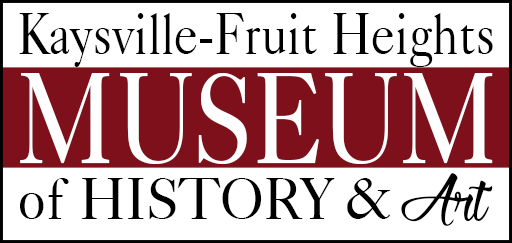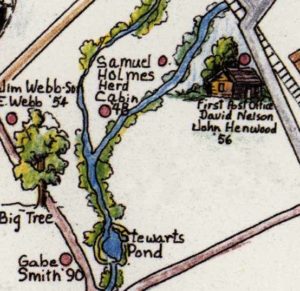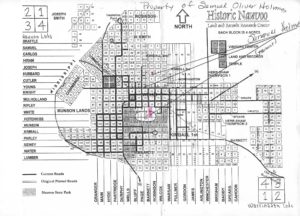Samuel Oliver Holmes

No Photo Available
1807-1865
Known as the second settler of Kaysville
Kay’s Ward’s second white pioneer and somewhat of a mysterious settler was Samuel Oliver Holmes. Samuel lived in Kay’s Ward for about ten years and then left the area for California. Consequently, he had no descendants who called Utah home so researching his history is difficult. However, we do know a little about the man and his life as the second pioneer to build a cabin in what is now Kaysville.
When the Holmes family arrived in what became Kay’s Ward in 1848, they either found a trappers hut or built a small cabin at the joining of two mountain streams near the shoreline of the Great Salt Lake about a mile north of where the first pioneer, Hector C. Haight, in 1847 tended the Vanguard Company’s cattle herds under the direction of Brigham Young. The point where the two streams came together offered an excellent spot for a homestead because of the abundance of cottonwood trees and easy access to water. Also, the land on both sides of the two streams proved to be fertile, and with time, the two streams were named Holmes – specifically the north and south forks of Holmes Creek.
Samuel Oliver Holmes was born in Barnstable, Massachusetts on January 6, 1807. He lived for a time in Alexander and Darien, New York, and was converted to the LDS Church while living in New York State. Soon after his conversion, he moved to Nauvoo, Illinois. In Nauvoo, he was a friend of Joseph Smith and his name can be found in several important Nauvoo church documents. He worked closely with Nauvoo’s LDS Church leaders and he was called upon to help with several important church projects. In the spring of 1846, he joined the followers of Brigham Young as they moved across Iowa and stopped for the winter in Nebraska Territory. He and his wife, Eliza Wilder Holmes, along with their four children left Winter Quarters on June 12, 1847, and traveled west in the Daniel Spencer/Ira Eldredge wagon train company. This was the same wagon train that Hector C. Haight traveled in and Haight and Holmes were acquainted. On the wagon train manifest the following Holmes family members are listed – Samuel Oliver, 43; Eliza Wilder, 39; Hyrum, 15; Oliver, 12; George, 9, and Ellen, 2.
According to census information, Samuel was a farmer. Consequently, in the first few years of his Kay’s Ward residence, he cleared land and planted crops along both banks of Holmes Creek. Water to irrigate his fields was taken from the streams and diverted to the relatively level ground of his farm area. In the 1850 Utah Territory census, Samuel and his family of six are listed as living about a mile and a half west of the town proper. Also, listed as living in the Holmes household were Polly Bard, 65, and Martha Henderson, 15. Martha was the daughter of Samuel Henderson who traveled to Utah in the same wagon train and later settled in Kay’s Ward. However, the relationship of Polly Bard to the Holmes family is unknown.
During the 1850s, Samuel Holmes served the people of Kay’s Ward as one of twelve ward teachers appointed by William Kay, the LDS bishop. In this calling, he visited neighbors and friends weekly and spent a great deal of his time assisting new arrivals as they moved into the Kay’s Ward settlement. Also, in his teacher’s calling, Samuel was often called upon to speak at ward meetings. For example, he was one of the speakers at the special conference that was held under the direction of Jedediah M. Grant, 1st counselor in the LDS Church’s first presidency that launched what came to be called the ‘Mormon Reformation,’ a movement that began with the re-baptism of the Kay’s Ward congregation in the Weinel Mill pond.
While living in Kay’s Ward, Samuel married two plural wives, Mary Jane Norris, and Catherine Halford. Mary Jane was the mother of eight children. However, there is no record of Catherine having any children.
Samuel Oliver Holmes lived in Kay’s Ward for a little over ten years. The last known reference to him can be found in the ward meeting minutes in 1858. And, according to unconfirmed accounts, he became extremely critical of the LDS Church’s leadership and left the area for California. The Mormon Reformation, the approach of the U.S. Army at the beginning of the Utah War, and the ‘move south’ of the Kay’s Ward settlers seems to have played into Samuel’s decision to move out of Utah Territory.
Samuel is listed on the 1860 Alameda County, California census as a farmer/rancher and, according to genealogical records found on FamilySearch, he died in Alameda, California on August 7, 1865, at the age of fifty-eight. He was buried in the Fremont Cemetery, Alameda County, California. Unfortunately, very little is known about the lives and histories of his wives or children after his passing.
Sources
-
“Samuel Oliver Holmes”, Our Kaysville Story Facebook post by Bill Sanders, June 1, 2023.
-
Photos courtesy: FamilySearch, Heritage Museum of Layton.


